#((the artist's name is etranger))
Explore tagged Tumblr posts
Text
KOFtober Day 18: Music
The red-haired boy looked around the empty space of the estate, making sure that his father was gone. As soon as he assessed that it was safe to come out of hiding, he made a beeline towards the living room. The young Iori was covered in bruises and scrapes - his father subjected him to a particularly brutal training session. His head was still ringing from the impact of his father's fists, and his clothes were also torn from the vicious claw-like strikes.
He could still hear his father's cold remarks in his head.
If you are this weak, then you are not worthy to be my son.
Tears welled up in the boy's eyes as he approached the living room. He huddled down by a table, burying his head in his knees as he sobbed. He had no one to turn to at this point, and no one can offer him any sort of comfort. During the midst of Iori's sobbing, he caught something in the corner of his eye - a pile of records were in the corner. Next to it was a turntable, which seemed to be seldom used. Now that his curiosity has been piqued, he wiped the tears away from his eyes and made his way to the records and the turntable. He had often seen it from time to time, but he only saw it being used by his father a while ago.
Upon picking up the first vinyl in the pile, he could see that the cover of that record was brightly colored and depicted a beach scene of sorts. On the back were the members of a jazz fusion group, and they seemed to be stylishly dressed. Shrugging his shoulders, he took out the vinyl to the turntable. Seeing that he wasn't tall enough to reach, Iori quickly made his way to the kitchen to find something that can help him reach it. Fortunately, he was able to grab a stool and bring it back to the living room. Taking the vinyl in hand, he lifted the needle off of the turntable and placed the record on it. Upon lowering the needle, the scratchiness startled the boy, almost making him lose his balance on the stool.
That's when he heard the music: bright keyboards tinkled their way through the music, accompanied by pounding drums and a thumping bassline. A brash saxophone barged its way into the music through a series of arpeggios that led into the main melody. As the track progressed, the boy found himself lost in the music - for a while, he forgot about the pain and the tears. This was what he needed the most.
#KOFtober#iori yagami#((I don't get to write kid Iori often enough))#((I also figured that music was his coping mechanism when he was young as well))#((I should also write the transition from a shy and sad kid to a bitter resentful and angry adult at some point))#((This was also inspired by a piece of fan art that I saw on Tumblr))#((the artist's name is etranger))
10 notes
·
View notes
Text

"A superstitious reporter in Palette City dedicated to covering the Palette Museum with a bit of a reclusive off-the-clock personality, although she seems be more in competition with her coworkers than she is truly passionate about the museum..."
more under the cut ^_^
Name : Lunett 'Silas' Dion
Catchphrase: "Like a fish, Superstitious Reporter!"
Age : Late 20's
Hobby : Piano, Napping in inconvient places
Likes : Lazing about, Bowling, Theatre
Dislikes : Work, Duppies
Height : 163cm
Birthday : July 30th
Favourite food : Milkshakes, Pot Stickers
Least favourite food : Ackee
Strength: ♪
Special skill : Interviewing, Puzzle-Solving
Relations with artists: if i try really hard i can explode that blonde with my mind
What she wants to do: "Isn't it obvious? I want to be better than everyone I work with ♪ Does everyone want to be better than everyone else? I mean not as much as me, I know, but.."
Sleeping time: "My mom always said it's good to get 10 hours of sleep.. Mm? Oh no, I barely follow that."
What she wants now: "I want to take a tour of that garden..I- I mean I have but I'd like to go again."
Daily habits: "Asking my boss if there's any work ♪ I need something to do or I'll end up like a lost ghost. Or following around that blonde."
youd think its a fancy scarf shes carrying but its actually a blanket so she can sleep anywhere and be first to everything

oh credit to @etrange-fleur i stole your layout sorry
9 notes
·
View notes
Note
hi!! I loved your anime recommendations, especially the ones about romance, I watched them all and I agree with you on them! so I wanted to ask you if you have more recs on the same genre :) or just ones that you really like please! thank you in advance!
Hello !!!! thank you so much for the ask !! I’m happy you liked the recs :) I’d like to know more about your thoughts on them if you're comfortable because they are some of my favorites,,
anyways, I’ve taken a break from anime for a while, but I do have a few more recs for you if you haven’t already seen them: (this is a very weird mix of anime btw, the themes can jump from complete fluffy goodness to emotional damage so sorry in advance for the very mixed bag I have constructed for you)
1. Sasaki to Miyano
I love this anime so much, it’s so wholesome and it’s always refreshing to me to see lgbtq+ pairings that aren’t absolutely toxic. It follows a boy named Miyano and he slowly starts gaining feelings for Sasaki and coming to terms with his sexuality. All of the characters are super lovable too which is always a plus. Its short, light on angst, and a super cute watch! (Genre: Slice of Life, Romance / 13 Episodes)

2. Orange
Orange put me through some things I’m not gonna lie. It was a very emotional watch for me and that’s why it’s so high up on the list. it’s a bit of a slower anime and it has a lot of layers, but I really enjoyed it personally. It kind of had similar vibes to My Little Monster, but it does have a darker plot. It also has a cool time travel/sci-fi twist without making it to technical (just how I like it). You can really feel for a lot of the characters and I think it makes for a very captivating story. I would recommend it to anyone. (Genre: Drama, Slice of Life, Romance / 13 Episodes)
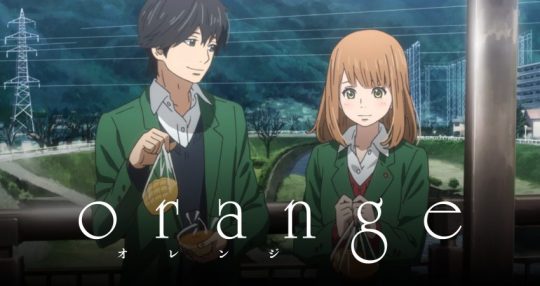
3. Umibe no Etranger/The Stranger by the Shore
This is a movie, but it’s absolutely stunning. The art and animation is so cool and as an artist I really found myself appreciating the amount of detail. Every scene is gorgeous. It takes place on an island where two people re-connect and fall in love. There’s angst, happiness, and a really pretty vibe to the whole thing. It’s not my favorite, but I do think it’s worth a watch. (Genre: Drama, Romance)
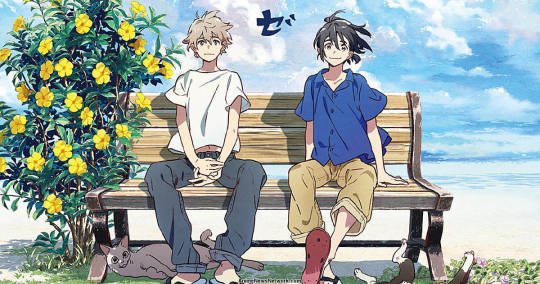
4. Beastars
okay hear me out-- This anime is a little out there, but genuinely really good. The characters being animals threw me off, but the story and the world is insanely well planned and thought out and I was hooked from episode one. It’s definitely not your typical romance, in fact it’s barely a romance, but its definitely present and a part of the the main storyline. It has dark themes and the storytelling is really good. I give this anime an 11/10 and I say that with my full chest. It's just really different from other shows and my pattern-scouting brain can normally guess the plot of an anime by episode three, but not this one, I genuinely had no idea where it was going. (Genre: Drama, " Coming-of-age Drama Fantasy” / 2 Seasons)
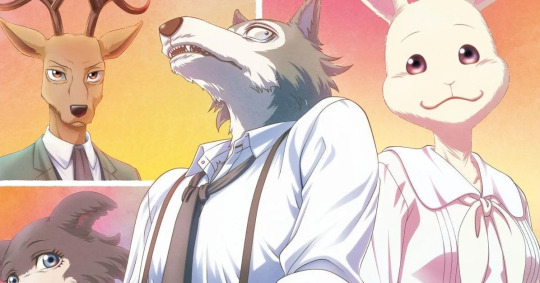
5. Horimiya
Just a silly little anime that I did really like. Sometimes I like taking a break from stories that really drag me into the plot and the emotion and just watch lighthearted things that can take my mind off stress for a little bit, and this anime falls into that category. The characters are very modern and the story was actually really refreshing so if you're looking for something like that then this is definitely an anime you should consider watching,, the art style is also gorgeous. (Genre: Romance, Shojo / 13 Episodes)
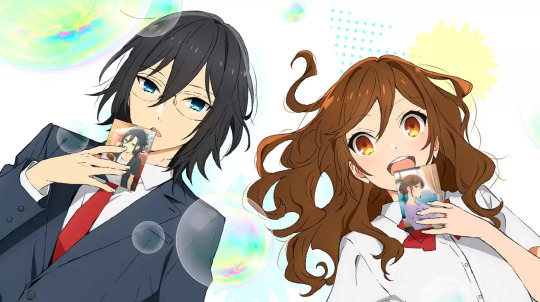
6. Romantic Killer
A funny/lighthearted anime to mix in with the group incase you would rather save yourself from any angst. It was corny and fun to watch and the art style is really bright and pretty. I also really liked the character designs. I really had to give the anime a good fighting chance, but I did like it after a few episodes. It follows a girl who finds herself stuck in all sorts of stereotypical/trope type romantic scenarios with multiple love interests and she’s just like “this is a no from me” the entire time and it made for a fun watch. It helped take my mind off the day to day, and it’s nice when a show can do that. (Genre: Romantic comedy, Comedy drama / 12 Episodes)
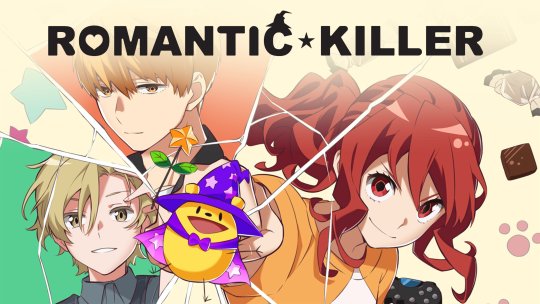
That’s all the romance/romance-ish recs I have at the moment, sorry it took me second to respond I wanted to sit down and answer it correctly when I had the time to do it,, but like I said, send me your full thoughts about them if you're comfortable I’d love to hear and I hope you like some of these ones as well!!
- Have a nice day !!
#anime#anime recs#jaysmediarecs#sasaki and miyano#orange anime#umibe no etranger#beastars#horimiya#romantic killer#romance anime
14 notes
·
View notes
Photo


Day 10 • Share your favorite Water dragons
When talking about water dragons, I obviously must bring up WaterBoi. Yes that is indeed his name. How do we explain it away in my lore? We don’t, I run on pure chaos. WaterBoi is my water rep…if I ever were to actually collect a set of flight reps. He’s an artist! He specializes in dynamic sculptures.
Etranger is gen 2 imperial I’d had my eye on for quite a while now! Finally bought her and gosh do I love how the shadow pride apparel work on her right now. Because she’s so new, she doesn’t have a functioning role in the clan yet, but hopefully we’ll get there soon.
#fr#flight rising#30 day dragon share challenge#dragon share day 10#water dragons#my dragons#fr guardian#fr imperial#false advertising: WaterBoi is not dressed as shown#but man I can drEAm
1 note
·
View note
Text
20 FOLLOWERS I’D LIKE TO KNOW
dTagged by: @fragrantricepaddy
1) Name/nickname: Yos
2) Gender: Male...i guess
3) Star sign: Scorpio
4) Height: 173cm
5) Hogwarts House: idk but Ravenclaw iirc
6) Favourite animal: Ferrets,bears,birds
7) Hours of sleep: 6,7/8 if good,9 if holidays
9) Number of blankets: Zero fuck im living in a tropical climate
10) Dream trip: Vietnam,Kyoto,Pacific Northwest,Louisiana,Germany,Poland,Russia,Czech Republic,Serbia
11) Dream job: Programmer/Electrical engineer
12) Time: 22.18
13) Birthday: 16th November
14) Favorite Bands: Manic Street Preachers,Daniel Kahn and the Painted Bird,The Doors,thats what i remembered
15) Favorite Solo Artists: ZUN,Pete Seeger,Woody Guthrie
16) Song Stuck In My Head: Arbetlosen Marsch/March of the Jobless Corps
17) Last Movie I Watched: Dunkirk(I haven’t go to the cinema for a long time)
18) Last Show I Watched: idk,some news i think.Maybe American Horror Story
19) When Did I Create My Blog: 2016
20) What Do I Post/Reblog: touhou,politics(of a libertarian-socialist bent),history,guns,kaiserreich,gravity falls/otgw(bit rare nowadays but still),harukaze/umibe no etranger,bsd(recently),bears and ferrets etc.
21) Last Thing I Googled: “Frankfurt-am-Main”
22) Other Blogs: Aesthetic/scenery blog @gensokyofalls , secondary blog @vessel--of-stars
23) Do I Get Asks: sometimes.
24) Why I Choose My URL: kirisame->kiridifferent
25) Following: 4.095(welp)
26) Followers: 392
27) Lucky Number: 5 and derivatives(25,50 etc)
28) Favorite Instrument: guitar i guess altho havent played in a long time.
29) What Am I Wearing: White t-shirt and dark blue shorts
30) Favorite Food: Fried rice
31) Nationality: Borders are a social construct(Indonesian)
32) Favorite Song: Pete Seeger - Solidarity Forever,Vessel of Stars ~ Casket of Star
33) Last Book Read: The Jungle,Upton Sinclair
34) Top Three Fictional Universes I’d Like To Join: Gensokyo would be nice to visit but not to live.Non-totalist Internationale victory Kaiserreich and Reds!A Revolutionary Timeline,tbh.
idk didnt wanna tag anyone now feel free to do it @sambapzap i guess
3 notes
·
View notes
Note
1-50 and yeah I'm serious
‘Do you prefer writing with black or blue pen?black pen !
Would you prefer to live in the country or the city?city, i had my share of living in the country, let me tell you its not what it cracks up to be especially if you have no transportation
If you could learn a new skill, what would it be?probably a musical instrument
Do you drink your tea or coffee with sugar?usually 2 sugar but im trying to cut back to 1 sugar
What was your favourite book as a child?first book i remember obsessing over (not manga) was Love Bites (a vampire kisses novel), if manga Death Note or Pet Shop of Horrors
Do you prefer baths or showers?Showers, baths are too long
If you could be a mythical creature, which would you choose?kappa
Do you prefer reading paper or electronic books?paper books, collecting the manga i want will take forever but bookmarking doesnt seem right :(
What is your favourite item of clothing?i dont know, probably my new senpai hat i got
Do you like your name? Would you ever change it?I did change it, to jupiter
Who is a mentor to you?never really had a mentor
Would you ever want to be famous? If so, what for?if i were to get famous i would hope its to the amount like hussie where you dont know much about me but still respect me, hopefully for my art as well
Are you a restless sleeper?i sleep pretty easily, probably has to do with my medications though
Do you consider yourself a romantic?um i could see that
Which element best represents you?water
Who do you want to be closer to?friends at work, online friends or any friends in general
Do you miss someone at the moment?i think im doing okay
Tell us about an early childhood memory.counting the purple lines on the sheets of my dads bed trying to fall asleep, also having my brother cut off all my hair i dont remember which came first
What is the strangest thing you have eaten?rabbit i guess
What can you see outside your bedroom window?the porch, parking lot and a bar and grill
What are you most thankful for?thankful i didnt go too far off the deep end in high school
Do you like spicy food?sometimes, in certain dishes, non spicy curry doesnt taste right
Have you ever met someone famous?nope
Do you keep a diary or journal?i have a bullet journal but its mostly for lists, then my blog if that counts
Do you prefer to use pen or pencil?pen, there is different colours
What is your star sign?leo
Do you like your cereal crunchy or soggy?crunchy, i cant eat soggy cereal :U
What would you want your legacy to be?i dont know, artist of some kind
Do you like reading? What was the last thing you read?i like reading manga, last stuff i read was all of kii kanna’s work on mangafox (Yuki no Shita no Qualia, Umibe no Etranger)
How do you show someone you love them?get really clingy and buy you stuff
Do you like ice in your drinks?ice tea only
What are you afraid of?being alone, unable to take care of myself (emotionally/mentally/financially), living a unfulfilling life
What is your favourite scent?bed sheets, coffee, freshly showered
Do you address older people by their first or last name?first name ?
If money was not a factor, how would you live your life?in the city, doesnt matter which one because i would travel between them so i never got sick of living in one place and didnt have time to hate the town i lived in, take lots of pictures and make art
Do you prefer swimming in pools or in the ocean?ive never swam in the ocean so pools
What would you do if you found $50 on the ground?take it man im poor
Have you ever seen a shooting star? Did you make a wish?yes and yes, usually it was something stupid like i wish for money or for enter blank here to like me
What is one thing you would want to teach your children?not having children but i guess that you have to find your own inspiration in life or nothing else matters
If you had to have a tattoo, what would it be and where would you get it?thinking of getting a tattoo of a tiny jupiter on my forearm somewhere
What can you hear right now?my partner typing on her mechanical gamer keyboard
Where do you feel the safest?in my bed
What is one thing you want to overcome/conquer?my anxiety and depression
If you could travel back to any era, which would you choose?90s if i had to (i like my technology)
What is your most used emoji?🌱 420
What is your favourite season? Why?Autumn, good for my aesthetic wear, coffee is prime, colours and shit, COLD
How would you spend your ideal day?coffee, netflix, art, game, coffee, anime, art, sleep maybe like go out but thats what i do on my days off
Describe yourself using one word.sleepy
What do you regret the most?living
Invent your own word. What does it mean?shurlp , you know ;0
2 notes
·
View notes
Photo





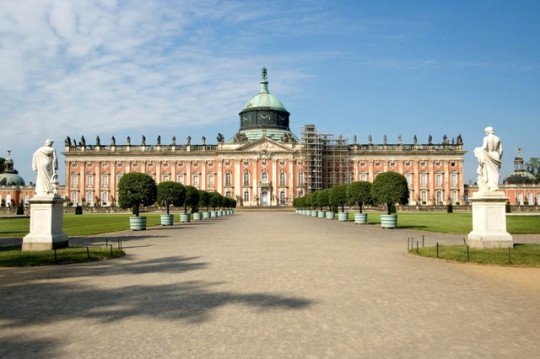
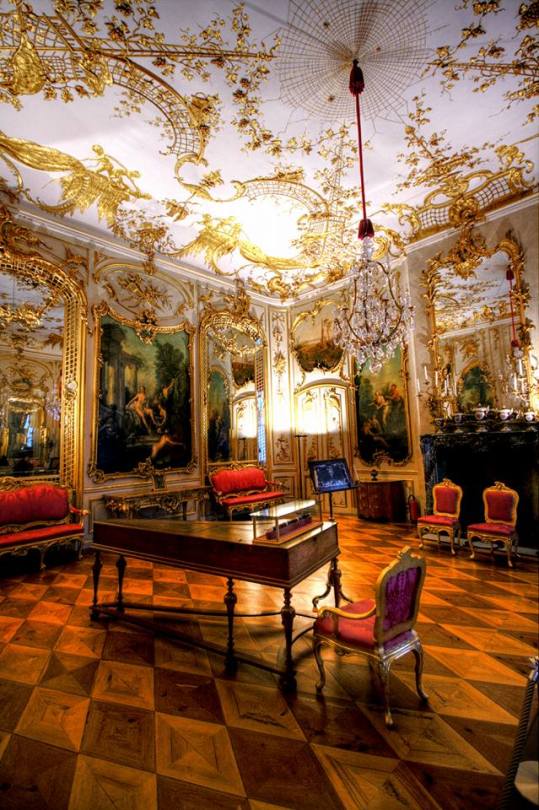

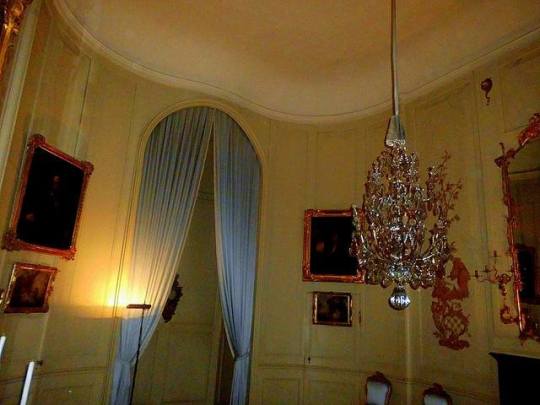








Sanssouci
Sanssouci is the summer palace of Frederick the Great, King of Prussia, in Potsdam, near Berlin. It is often counted among the German rivals of Versailles. While Sanssouci is in the more intimate Rococo style and is far smaller than its French Baroque counterpart, it too is notable for the numerous temples and follies in the park. The palace was designed/built by Georg Wenzeslaus von Knobelsdorff between 1745 and 1747 to fulfill King Frederick's need for a private residence where he could relax away from the pomp and ceremony of the Berlin court. The palace's name emphasises this; it is a French phrase (sans souci), which translates as "without concerns", meaning "without worries" or "carefree", symbolising that the palace was a place for relaxation rather than a seat of power. The name in past times reflected a play on words, with the insertion of a comma visible between the words Sans and Souci, viz. Sans, Souci. Kittsteiner theorizes that this could be a philosophical play on words, meaning "without, beware" or it could be some secret religious message which nobody has interpreted, left to posterity by Frederick II.
Sanssouci is little more than a large, single-story villa—more like the Château de Marly than Versailles. Containing just ten principal rooms, it was built on the brow of a terraced hill at the centre of the park. The influence of King Frederick's personal taste in the design and decoration of the palace was so great that its style is characterised as "Frederician Rococo", and his feelings for the palace were so strong that he conceived it as "a place that would die with him". Because of a disagreement about the site of the palace in the park, Knobelsdorff was fired in 1746. Jan Bouman, a Dutch architect, finished the project.
During the 19th century, the palace became a residence of Frederick William IV. He employed the architect Ludwig Persius to restore and enlarge the palace, while Ferdinand von Arnim was charged with improving the grounds and thus the view from the palace. The town of Potsdam, with its palaces, was a favourite place of residence for the German imperial family until the fall of the Hohenzollern dynasty in 1918.
After World War II, the palace became a tourist attraction in East Germany. Following German reunification in 1990, Frederick's body was returned to the palace and buried in a new tomb overlooking the gardens he had created. Sanssouci and its extensive gardens became a World Heritage Site in 1990 under the protection of UNESCO; in 1995, the Foundation for Prussian Palaces and Gardens in Berlin-Brandenburg was established to care for Sanssouci and the other former imperial palaces in and around Berlin. These palaces are now visited by more than two million people a year from all over the world.
The location and layout of Sanssouci above a vineyard reflected the pre-Romantic ideal of harmony between man and nature, in a landscape ordered by human touch. Winemaking, however, was to take second place to the design of the palace and pleasure gardens. The hill on which Frederick created his terrace vineyard was to become the focal point of his demesne, crowned by the new, but small, palace—"mein Weinberghäuschen" ("my little vineyard house"), as Frederick called it. With its extensive views of the countryside in the midst of nature, Frederick wanted to reside there sans souci ("without a care") and to follow his personal and artistic interests. Hence, the palace was intended for the use of Frederick and his private guests—his sketch (illustration) indicated the balanced suites "pour les etrangers" and "pour le roy"— only during the summer months, from the end of April to the beginning of October.
Twenty years following his creation of Sanssouci, Frederick built the New Palace (Neues Palais) in the western part of the park. This far larger palace was in direct contrast to the relaxed ethos behind Sanssouci, and displayed Frederick's power and strength to the world, in the Baroque style. The design of the New Palace was intended to demonstrate that Prussia's capabilities were undiminished despite its near defeat in the Seven Years' War. Frederick made no secret of his intention, even referring to the new construction as his "fanfaronnade" ("showing off").
This concept of a grand palace designed to impress has led to the comparison of the palaces of Potsdam to Versailles, with Sanssouci being thrust into the role of one of the Trianons. This analogy, though easy to understand, ignores the original merits of the concept behind Sanssouci, the palace for which the whole park and setting were created. Unlike the Trianons, Sanssouci was not an afterthought to escape the larger palace, for the simple reason that the larger palace did not exist at the time of Sanssouci's conception; and once it did, Frederick almost never stayed in the New Palace except on rare occasions when entertaining diplomats he wished to impress. It is true, however, that Sanssouci was intended to be a private place of retreat rather than display of power, strength and architectural merit. Unlike the Trianons, Sanssouci was designed to be a whole unto itself.
Sanssouci is small, with the principal block (or corps de logis) being a narrow single-storey enfilade of just ten rooms, including a service passage and staff rooms behind them. Frederick's amateur sketch of 1745 (illustrated above)demonstrates that his architect, Knobelsdorff, was more a draughtsman at Sanssouci than complete architect. Frederick appears to have accepted no suggestions for alteration to his plans, refusing Knobelsdorff's idea that the palace should have a semi-basement storey, which would not only have provided service areas closer at hand, but would have put the principal rooms on a raised piano nobile. This would have given the palace not only a more commanding presence, but also would have prevented the problems of dampness to which it has always been prone. However, Frederick wanted an intimate palace for living: for example, rather than scaling a large number of steps, he wanted to enter the palace immediately from the garden. He insisted on a building on the ground level, of which the pedestal was the hill: in short, this was to be a private pleasure house. His recurring theme and requirement was for a house with close connections between its style and free nature. The principal rooms, lit by tall slender windows, face south over the vineyard gardens; the north façade is the entrance front, where a semicircular cour d'honneur was created by two segmented Corinthian colonnades.
In the park, east of the palace, is the Sanssouci Picture Gallery, built from 1755 to 1764 under the supervision of the architect Johann Gottfried Büring. It stands on the site of a former greenhouse, where Frederick raised tropical fruit. The Picture Gallery is the oldest extant museum built for a ruler in Germany. Like the palace itself, it is a long, low building, dominated by a central domed bow of three bays.
Following the death of Frederick a new era began, a visible sign of which was the change in architectural styles. Neo-Classicism, popular elsewhere in Europe but ignored by Frederick, now found its way to Potsdam and Berlin during the reign of the new king Frederick William II. He ordered the construction of a new palace in the new more fashionable style, and stayed at Sanssouci only occasionally.
The reception and bedrooms were renovated and completely altered immediately after Frederick's death. Frederick William von Erdmannsdorff received the commission for the refurbishment. While Frederick had been constructing the New Palace in the Baroque style between 1763 and 1769, Erdmannsdorff, an advocate of the new neo-classical style, had created Schloss Wörlitz in Wörlitz Park, the first neo-classical palace in Germany. As a result of his influence, Sanssouci became the first of the palaces in Potsdam and Berlin to be remodelled with a neo-classical interior. In 1797, Frederick William II was succeeded by Frederick William III; he visited Sanssouci even less frequently than did his father, preferring to spend the summer months in Paretz Palace or on the Pfaueninsel in Berlin.
youtube
1 note
·
View note
Text
Joseph Conrad the linguistic outsider
Joseph Conrad: the linguistic outsider
Joseph Conrad: the linguistic outsider
“To begin with I wish to disclaim the possession of those high gifts of imagination and expression which would have enabled my pen to create for the reader the personality of the man who called himself, after the Russian custom, Cyril son of Isidor — Kirylo Sidorovitch — Razumov. If I have ever had these gifts in any sort of living form they have been smothered out of existence a long time ago under a wilderness of words. Words, as is well known, are the great foes of reality.”
So writes Joseph Conrad, introducing his protagonist at the start of Under Western Eyes. It is a strange choice to begin a novel — itself a great artifice of language — with a comment about the unreality of words. This is precisely where we would expect to find a writer attempting to lure or lull us into a suspension of disbelief, but instead Conrad only sharpens our sense of the work as a fiction. Why this commentary on the slipperiness of words, why this suspicion towards language? There are surprising answers to these questions, ones which shed a little light on the words we find alongside Conrad’s name in the Oxford English Dictionary (OED).
Conrad’s deep fixation with the workings of words came about in large part because he was — as is often forgotten — himself not a native speaker of English. Indeed, he was born, on the third of December 1857, not Joseph Conrad of Great Britain, but Jozef Teodor Konrad Korzeniowski. A child of Polish parents born in Ukraine, he spent much of his childhood moving between states within the Prussian and Russian empires up until the age of 16, when he moved to Marseilles with the aim of becoming a sailor. Both maritime life, and the French language, would cast long shadows across his work as a writer.
Sea, storms, and shipwreck
We remember Conrad today for his tales of exploration and his nautical narratives. These include Nostromo and The Shadow-Line, tales of high-seas adventures and disaster, and Lord Jim, the story of a man disgraced after abandonment of ship. The recurring motifs of storms at sea and shipwrecks, of western gentlemen in the far-flung wilds of nature, animate the majority of Conrad’s works, and his own maritime experiences provided him with the backbone of a literary career.
The narrator of Lord Jim and Youth, Charles Marlow, is also the dominant voice in what is Conrad’s most famous work today: Heart of Darkness. If Heart of Darkness is a story of exploration, then it is an exploration of the mind and of madness. It follows Marlow as he journeys up the river Congo in pursuit of the elusive ivory trader Mr Kurtz. But as he journeys, the distinction between civilization and ‘savagery’ — Marlow’s own colonial-era term — becomes troubled, and by the time he meets Kurtz, who, mortally ill, has deemed himself a god amongst the local people, nothing seems stable. These are the themes that Francis Ford Coppola drew upon when he revisited Conrad’s narrative for the film Apocalypse Now, cementing Conrad’s place within the modern imagination.
An outsider

Before he wrote these works, Conrad did not move to Britain until 1878, and he was not a British citizen until 1886. For much of this early period of his life, French was the language in which he felt most comfortable. Writing many years (and several major novels) later, in a letter of 1907, he states that even then “l’Anglais m’est toujours une langue etrangere” — “English is to me always a foreign language”.
He was, of course, a master of the language, but his status as an outsider does momentarily shine through from time to time. Scholars have noted that unusual phrasings such as ‘to develop to you my ideas’ and ‘in pass of becoming famous’, both from The Secret Agent, can be explained by their French roots — developper, ‘to elaborate’, and en passe de, ‘in the process of’. These Gallicisms offer glimpses of the rich life Conrad lived before he ever set foot on British soil — traces, indeed, of the former Jozef Konrad.
Words for which Conrad currently provides the earliest evidence in the OED also bespeak a mind that swam with the languages of the continent, and they are signs that he might have thought in French, even when he was writing in English. Amongst these entries is the borrowed phrase en pantoufles— literally, ‘in slippers’. Conrad neatly relocates the phrase to signify an individual who is at ease, at comfort, free, and informal — as if wearing slippers.
Creating new word forms
Conrad’s status as a relative outsider to the English language permitted him the freedom to create new word forms for artistic ends. He provides the first evidence for the transformation of the noun paraffin into the adjective paraffiny, describing the smell of a burning ship. He also transformed many adjectives into adverbs, a habit perhaps influenced by his status as a French speaker. Conrad coined words such as muffledly: ‘The church clock began muffledly to chime the quarters’. Convulsive sobbing becomes sobbing convulsedly.
Such words he often uses to enhance the images which they outline. When Conrad writes that ‘The second mate was lankily stalking the deck’ (inventing the word lankily as he goes), he maintains a subtle distance between the mate and lankiness. Was the man, then, ‘lanky’? Or did he simply move in the manner of a lanky person? Conrad’s artistry lies in the uncommon character of such expressions; for, by placing in front of the reader an unusual phrase, an unusual image, Conrad all the more encourages us to recreate that image in our minds.
Prose poems
It could be argued that a further reason why these adverbial inventions appealed to Conrad lies in their sounds. Conrad had an excellent ear for the rhythms of language, and his writings are often celebrated as ‘prose poems’. T. S. Eliot had originally planned to quote a famous phrase from Heart of Darkness at the beginning of his own poem ‘The Waste-Land’: “The horror! The horror!” (the final words of Kurtz). Sure enough, the regularity of the stresses here, as the eye rolls twice over ‘hor-ror’, makes the phrase sound like a short line of verse. And the same can be said of Conrad’s coinages. ‘He had been sobbing convulsedly’, seems to carry more poetic force than the alternative: ‘His sobbing had been convulsed’. Convulsedly itself has rhythm, and a sense of movement, through its multiple rising and falling syllables. Similarly, ‘a heavy, sooty, paraffiny smell’ builds through rhyme, in a way that ‘a heavy, sooty, paraffin-like smell’ does not. Conrad, a non-native speaker of English, plays subtly with words, preserving their meaning but promoting new sounds.
Ultimately, it is this poetic force which has secured Conrad a place in literary history. There are ongoing disputes — important disputes — about whether or not his depiction of colonial practices contain in themselves xenophobic views. Certainly, not all passages of Conrad’s prose are as palatable now as they once were. But the power of Conrad’s words, be they Polish, French, or English, have meant that his works have enduring appeal, and his explorations — geographical as well as psychological — speak to us as much today as they would have done a hundred years ago. Let us end on the description of London from the very beginning of Heart of Darkness, and let Conrad speak for himself:
“The water shone pacifically, the sky without a speck was a benign immensity of unstained light, the very mist of the Essex marshes was like a gauzy and radiant fabric hung from the wooded rises inland and draping the low shores in diaphanous folds. Only the gloom to the west brooding over the upper reaches became more sombre every minute as if angered by the approach of the sun.”
The opinions and other information contained in OxfordWords blog posts and comments do not necessarily reflect the opinions or positions of Oxford University Press.
Chris Townsend
Chris Townsend recently received his doctorate in English Literature from the University of Cambridge. He writes on literary history and biography, and he edits for the King's Review magazine. You can follow him on Twitter @marmeladrome.
December 1 / 2016
Not just heffalumps and woozles: the words of A.A. Milne
If you’ve heard of A.A. Milne, there is almost certainly one reason .
A-tremble and dimplement: Elizabeth Barrett Browning in the OED
Did you know that Elizabeth Barrett Browning is the fifth most quoted .
0 notes
Text
Breathe in, Breathe han
We’re all aliens to ourselves
by Anna Ferro and Justine Gensse


Images: Justine Gensse (December 2016)
“Han (한恨) is an essentialist Korean sociocultural concept that is popularly understood as a uniquely Korean collective feeling of unresolved resentment, pain, grief, and anger.” (Kim, 2015).
youtube
The han is well-known to characterize the Korean people, an emotion which remains complex to grasp for westerners, and hardly translatable (Kim, 2015). The han brings to light a feeling of resentment which is not necessarily violent, and does not only relate to the desperation Chosōn poets used to express as regards their state of exile (Berlet, 2006). On the verge of sufferance and hope, the han is often captured as ‘the Korean ethos’ and the soul of Korean art (Kim,2015). Thus, it echoes the Nietzschean dualism between pain and pleasure, terror and ecstasy, which finds its roots in the duality between chaos and harmony, namely the Dionysian and Apollonian (Braembussche, 2006 ). The reconciliation between these two antagonistic drives enabled the Greek tragedy to develop (Braembussche, 2006 ). The art form of the tragedy is perceived as a strong marker of the so-called western civilization. The representation of fatality on stage enlightens how protagonists take responsibility against their own faith and existence (Braembussche, 2006 ). In the same way, Korean people perform the han as a mundane attitude in order to cope with resentment. Elucidating the “unconscious life of the soul” in Nietzschean terms, push us to understand the deeper emotional layers of Korean creativity (Braembussche, 2006 , p. 89). As follow, we wonder how does the state of han mirror Nietzsche’s approach to the aesthetic experience?
The han is tied to the Korean people, as an intrinsic component of their national fatality, and unescapable man condition. The han is often described as a universal melancholia running through the blood of all and each Korean, as something distinguishable from anything westerners have ever experienced (Kim, 2015).
“We cannot deny that we were born from the womb of han and raised in the bosom of han.” the poet Ko Ŭn (1988) famously wrote
Besides being a social construct, the feeling of han encapsulates the grief of collective historical memory and trauma. Indeed, the emotion of han relates to unwounded colonial oppressions, deep-rooted grief, and longings (Kim, 2015). At the same time, it refers to the individual sufferance Koreans bear in daily life (Kim,2015). During the Japanese occupation, Korean modern poet Yun Dong-Ju (1917-1945) expressed the complex emotion of han:
Prelude
Let me have no shame
under heaven ‘til I die.
Even wind in the leaves
pained my soul.
With a heart that sings of stars
I must love all dying things.
And I must walk the path
given to me.
Tonight also,
the wind sweeps over the stars.
Poetry: Yun Dong-Ju (November 20, 1941)

Photography: Hasisi Park (December 2014)
In 1920, Japanese intellectual Yanagi defined the nature of Korean aesthetic as the ‘aesthetic of sorrow’, putting great emphasis on the painful history that underlies the common meaning of han (Kim, 2015). As the Greek tragedy mirrors the transition from aristocracy to democracy, from mythos to logos; the state of han represents shifting frames from the colonial occupation towards the achievement of a more independent nation state. In other words, it explains the empowerment of human beings in taking being responsible for their own faith[1]. According to Nietzsche, the duality between the Apollinian and the Dionysian is a mutual necessity (Braembussche, 2006 ). The Apollinian, the world of the dream and beauty that transcends the individual, needs to co-exist and be united with the Dionysian, which represents the primal anguish. In fact, the Apollinian state is an escape from the empirical disruptive reality and makes the tribulations of life bearable, in a perfection that goes beyond the individual (Braembussche, 2006 ). The han surpasses the individual as it involves a collective postcolonial trauma (Kim, 2015). At the same time, each Korean embraces the han in the way the meaning-making of the concept evolves depending on the context in which it is used (Bannon, 2008).

Screenshot: Extract from a Facebook discussion with a fellow Korean classmate Joseph on the 12th of March 2017
The han has a crucial role in Korean culture because it functions as a signature for Korean uniqueness and particular aesthetics (Kim, 2015). Korean television and films are influenced by the han, as well as traditional art forms of tragedy such as Pansori performance songs and folk tales (Bannon, 2008). According to Nietzsche, the art form of a tragedy transforms sufferance of human kind into an aesthetic phenomenon (Braembussche, 2006 ). As the Greek tragedy, the art form of Pansori can be analyzed similarly as a form of sublimation from the state of han. Nietzsche claims art as a synthesis of form and expression (Braembussche, 2006 ). In the process of representation, the Korean artist may get over her or his own state of han by discharging an emotional energy into the artwork.

Image: Pansori performance at the Busan Cultural Center in Busan South Korea (Wikipedia, 2017)
To conclude, the han is not solely an expression of postcolonial mourning, it is embedded within the Korean collective imagination (Kim, 2015). The concept of han enables to comprehend bigger issues as regards Korean identity in the arts, at an age when symbolic violence is revealed through the forces of globalization, while artists delve into hybrid art, and seek to retrieve their Korean identity. As the Greek tragedy still has resonance in today’s western society, the han prevails in contemporary Korean art. The feeling of han is certainly related to the artistic genius of South Korean art, as a sublimation of melancholia in its original and unique creations. As Julia Kristeva poetically and politically claims “We’re all strangers to ourselves” or perhaps, in a Korean immigration lexicon, we’re all aliens to ourselves (Kristeva, 1988). [2]
Playlist
https://www.youtube.com/watch?v=WX0rsyxMr4A: In 2015, Korean rapper Tablo released a song called “Hood”) dealing with the han as a central theme
youtube
https://www.youtube.com/watch?v=BIwuh5ThHsA: Pansori: Korea’s Vocal Art & Instrumental Music, Korean Traditional Solo Opera Pansori (Choonhyang-ga) by singer Kim So-hee
youtube
https://www.youtube.com/watch?v=DRBbu9BKQrA: Future Pansori Duo Ninano Nanda is composed of traditional/contemporary vocalist producer Jang Goon and sound artist and producer Shin Hang. Together they merge post electronic dub and traditional Korean Pansori music influences.
youtube
Notes
[1] Lecture Niels Van Poecke about Nietzche on the 10th of March 2017 « Introduction to Aesthetics », Erasmus Unviersiteit, Rotterdam
[2] As a matter of fact, immigrants in South Korea are granted a residence card (The Alien Registration Card) which categorizes the stranger as an alien.
References
Bannon, D. (2008, January ). Unique Korean Cultural Concepts in Interpersonal Relations . Translation Journal , 12(1).
Berlet, J.-L. (2006, November 25). Le Han coréen et la mélancolie (The Korean Han and melancholia) . Retrieved from Accord Philo Website : http://www.accordphilo.com/article-4679596.html
Braembussche, A. V. (2006 ). Thinking Art: An Introduction to Philosophy of Art. Brussels : Springer.
Kim, S. S. (2015). Korean Han and the Postcolonial Afterlives of “The Beauty of Sorrow”. Project Muse.
Kristeva, J. (1988). Etrangers à nous-mêmes (Strangers to Ourselves). Fayard .
0 notes